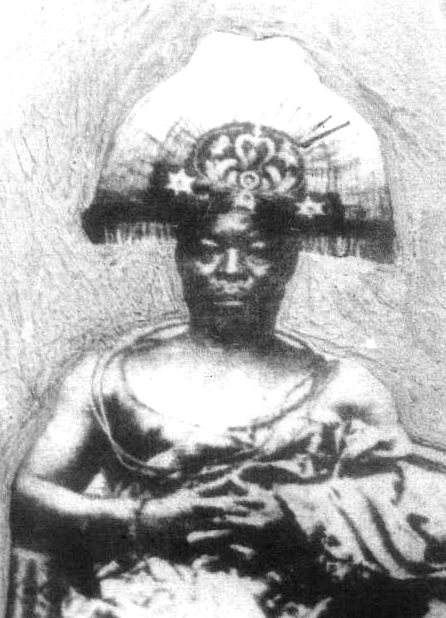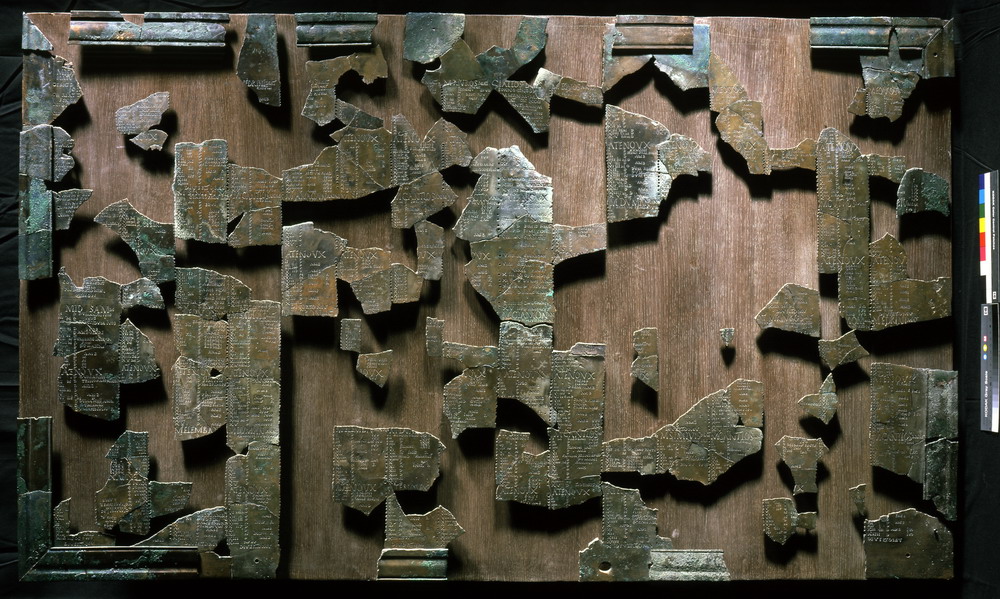|
1897 In Archaeology
Below are notable events in archaeology that occurred in 1897. Explorations * Rudolf Ernst Brünnow and Alfred von Domaszewski begin a two-year expedition to the Arabian Peninsula, including Petra. Excavations * Excavation of Glastonbury Lake Village by Arthur Bulleid and Harold St George Gray begins. * Maud Cunnington carries out her first excavations in the Devizes area of England. * Excavation of the first Mycenaean chamber tombs in Kolonaki at Thebes, Greece, by Dimitrios Filios. * Excavation of Nekhen in Egypt begins (continues to 1899). * Excavation of Susa in Iran by a French expedition led by Jacques de Morgan begins (continues to 1911). Finds * May - Yde Girl, a bog body, is discovered in the village of Yde, The Netherlands. * August 4 - The " Lady of Elche" Iberian sculpture (4th century BCE) is found at L'Alcúdia near Elche in Spain. * Coligny calendar. * Alekanovo inscription. * Silver and gold tubes of the Maykop culture from a burial mound in Arm ... [...More Info...] [...Related Items...] OR: [Wikipedia] [Google] [Baidu] |
Jacques De Morgan
Jean-Jacques de Morgan (3 June 1857, Huisseau-sur-Cosson, Loir-et-Cher – 14 June 1924) was a French people, French mining engineer, geologist, and archaeologist. He was the director of antiquities in Khedivate of Egypt, Egypt during the 19th century, and excavated in Memphis, Egypt, Memphis and Dashur, providing many drawings of many Egyptians, Egyptian pyramids. He also worked at Stonehenge, and Persepolis, and many other sites. He also went to Russian Armenia, as manager of a copper mine at Akhtala. "The Caucasus is of special interest in the study of the origins of metals; it is the easternmost point from which prehistoric remains are known; older than Europe and Greece, it still retains the traces of those civilizations that were the cradle of our own." In 1887-89 he unearthed 576 graves around Alaverdi, Armenia, Alaverdi and Akhatala, near the Tiflis-Alexandropol railway line. Background His father Eugène, also called "Baron" de Morgan, was an engineer in mineral f ... [...More Info...] [...Related Items...] OR: [Wikipedia] [Google] [Baidu] |
Benin Bronzes
The Benin Bronzes are a group of several thousand metal plaques and sculptures that decorated the royal palace of the Kingdom of Benin, in what is now Edo State, Nigeria. Collectively, the objects form the best examples of Benin art and were created from the thirteenth century by artists of the Edo people. Apart from the plaques, other sculptures in brass or bronze include portrait heads, jewelry, and smaller pieces. Many of the dramatic sculptures date to the thirteenth century, and a large part of the collection dates to the fifteenth and sixteenth centuries. It is believed that two "golden ages" in Benin metal workmanship occurred during the reigns of Esigie ( 1550) and of Eresoyen (1735–1750), when their workmanship achieved its highest quality. Most of the plaques and other objects were looted by British forces during the Benin Expedition of 1897 as imperial control was being consolidated in Southern Nigeria. About two hundred pieces were taken to the British Museum in ... [...More Info...] [...Related Items...] OR: [Wikipedia] [Google] [Baidu] |
Benin Expedition Of 1897
The Benin Expedition of 1897 was a punitive expedition by a British force of 1,200 men under Sir Harry Rawson in response to the ambush of a previous British party under Acting Consul General James Phillips, of the Niger Coast Protectorate. Rawson's troops captured and sacked Benin City, bringing to an end the Kingdom of Benin, which was eventually absorbed into colonial Nigeria. Background At the end of the 19th century, the Kingdom of Benin had managed to retain its independence during the Scramble for Africa, and the Oba of Benin exercised a monopoly over trade in Benin's territories which the Royal Niger Company considered a threat. In 1892, Deputy Commissioner and Vice-Consul Captain Henry Lionel Galway (1859–1949) tried to negotiate a trade agreement with Oba Ovọnramwẹn Nọgbaisi (1888–1914) to allow for the free passage of goods through his territory and the development of the palm oil industry. Captain Gallwey (as his name was then spelled) would push for ... [...More Info...] [...Related Items...] OR: [Wikipedia] [Google] [Baidu] |
Science News
''Science News (SN)'' is an American bi-weekly magazine devoted to articles about new scientific and technical developments, typically gleaned from recent scientific and technical journals. History ''Science News'' has been published since 1922 by Society for Science & the Public, a non-profit organization founded by E. W. Scripps in 1920. American chemist Edwin Slosson served as the publication's first editor. From 1922 to 1966, it was called ''Science News Letter''. The title was changed to ''Science News'' with the March 12, 1966 issue (vol. 89, no. 11). Tom Siegfried was the editor from 2007 to 2012. In 2012, Siegfried stepped down, and Eva Emerson became the Editor in Chief of the magazine. In 2017, Eva Emerson stepped down to become the editor of a new digital magazine, Annual Reviews. On February 1, 2018 Nancy Shute became the Editor in Chief of the magazine. In April 2008, the magazine changed from a weekly format to the current biweekly format, and the website was ... [...More Info...] [...Related Items...] OR: [Wikipedia] [Google] [Baidu] |
Drinking Straw
A drinking straw is a utensil that is intended to carry the contents of a beverage to one's mouth. Straws are commonly made from plastics but environmental concerns and new regulation have led to rise in reusable and biodegradable straws. These straws are often made of silicone, cardboard, or metal. A straw is used by placing one end in one's mouth and the other in a beverage. By employing suction, the air pressure in one's mouth drops causing atmospheric pressure to force the liquid through the straw and into the mouth. Drinking straws can be straight or have an angle-adjustable bellows segment. Drinking straws have historically been intended as a single-use product and several countries, regions, and municipalities have banned single-use plastic straws to reduce plastic pollution. Additionally, some companies have even voluntarily banned or reduced the number of plastic straws distributed from their premises. History Early examples The first known straws were made by the ... [...More Info...] [...Related Items...] OR: [Wikipedia] [Google] [Baidu] |
2022 In Archaeology
This page lists significant events of 2022 in archaeology. Excavations ;February * Archaeologists begin excavation in Haverfordwest, Wales, of the site of a medieval priory containing 240 burials at the location of a former department store. ;July * 12 – Archaeologists from The University of Manchester have excavated for the first time the 5,000-year-old Neolithic chamber tomb linked to King Arthur, the legendary ruler of Camelot. The excavation was carried out around the chamber of nine upright stones weighing more than 25 tons in present-day Herefordshire, England. Finds ;January * 24 – Archaeologists announced the discovery of thousands of prehistoric pits during an electromagnetic induction field survey around Stonehenge * 25 – Archaeologists announced the discovery of an intact 2,000-year-old blue glass bowl with a trim rim and a vertical stripe pattern in the Dutch city of Nijmegen in Netherlands. ;February * 1 – Velia excavation reported the discover ... [...More Info...] [...Related Items...] OR: [Wikipedia] [Google] [Baidu] |
Armenia
Armenia (), , group=pron officially the Republic of Armenia,, is a landlocked country in the Armenian Highlands of Western Asia.The UNbr>classification of world regions places Armenia in Western Asia; the CIA World Factbook , , and ''Oxford Reference Online'' also place Armenia in Asia. It is a part of the Caucasus region; and is bordered by Turkey to the west, Georgia to the north, the Lachin corridor (under a Russian peacekeeping force) and Azerbaijan to the east, and Iran and the Azerbaijani exclave of Nakhchivan to the south. Yerevan is the capital, largest city and the financial center. Armenia is a unitary, multi-party, democratic nation-state with an ancient cultural heritage. The first Armenian state of Urartu was established in 860 BC, and by the 6th century BC it was replaced by the Satrapy of Armenia. The Kingdom of Armenia reached its height under Tigranes the Great in the 1st century BC and in the year 301 became the first state in the world to adopt ... [...More Info...] [...Related Items...] OR: [Wikipedia] [Google] [Baidu] |
Maykop Culture
The Maykop culture (, , scientific transliteration: ''Majkop,''), c. 3700 BC– 3000 BC, was a major Bronze Age archaeological culture in the western Caucasus region. It extends along the area from the Taman Peninsula at the Kerch Strait to near the modern border of Dagestan and southwards to the Kura River. The culture takes its name from a royal burial, the Maykop kurgan in the Kuban River valley. According to genetic studies on ancient DNA published in 2018, the Maykop population came from the south, from Imereti, and was descended from the Chalcolithic farmers known as Darkveti-Meshoko who first colonized the north side of the Caucasus. Maykop is therefore the "ideal archaeological candidate for the founders of the Northwest Caucasian language family". Territory In the south, the Maykop culture bordered the approximately contemporaneous Kura-Araxes culture (3500—2200 BC), which extends into the Armenian Plateau and apparently influenced it. To the north is the ... [...More Info...] [...Related Items...] OR: [Wikipedia] [Google] [Baidu] |
Alekanovo Inscription
The Alekanovo inscription is a group of Undeciphered writing systems, undeciphered characters found in the fall of 1897 in the Russian village of Alekanovo (Ryazan Oblast), Alekanovo (Ryazan Oblast) by Russian archeologist Vasily Gorodtsov. The characters were inscribed on a small clay pot 15 cm high, located in a Slavs, Slavic burial site. While the inscription was found to be authentic, there is no widely accepted reading of it. The inscription was dated by Gorodtsov to 10th–11th century AD. Similar characters on shards were found in Alekanovo in 1898.''Городцов В. А.'' «Заметка о загадочных знаках на обломках глиняной посуды» // Археологические известия и заметки. 11-12. М., 1898. стр. 370. б). Gorodtsov proposed that the characters might be runes, but found only two characters similar to runes. According to Polish Ethnography, ethnographer , the inscription is mirror writing a ... [...More Info...] [...Related Items...] OR: [Wikipedia] [Google] [Baidu] |
Coligny Calendar
The Coligny calendar is a second century Celtic calendar found in 1897 in Coligny, France. It is a lunisolar calendar with a five-year cycle of 62 months. It has been used to reconstruct the ancient Celtic calendar. The letters on the calendar are Latin and the language is Gaulish. The calendar features "weeks" that consist of 5 days. Each month has six weeks and either 29 or 30 days. There are twelve such months in a year, totaling 354 days. A calendar cycle consisted of five years of this type, sixty regular months plus two intercalary months. For the calendar to remain in sync with the lunar phases, the five-year cycle must have been 1,831 days long. This would have made the calendar drift out of sync with the seasons by almost a day every year. Roman sources suggest that the Celtic calendar had a thirty-year cycle. The solar drift issue could have been dealt with by dropping a month once every 30 years. Each Celtic month started on the sixth day ... [...More Info...] [...Related Items...] OR: [Wikipedia] [Google] [Baidu] |
Elche
Elche ( ca-valencia, Elx) is a city and municipality of Spain, belonging to the province of Alicante, in the Valencian Community. According to 2014 data, Elche has a population of 228,647 inhabitants,Elche supera ya los 228.300 habitantes INFORMACION.es, December 31, 2008, Editorial Prensa Ibérica making it the third most populated municipality in the region (after and ) and the 20th largest Spanish municipality. It is part of the |
.jpg)

.jpg)

